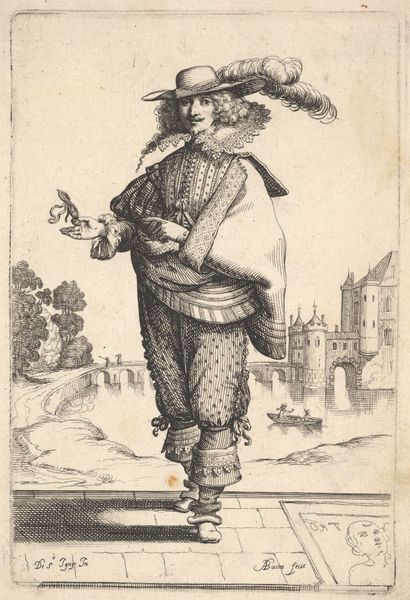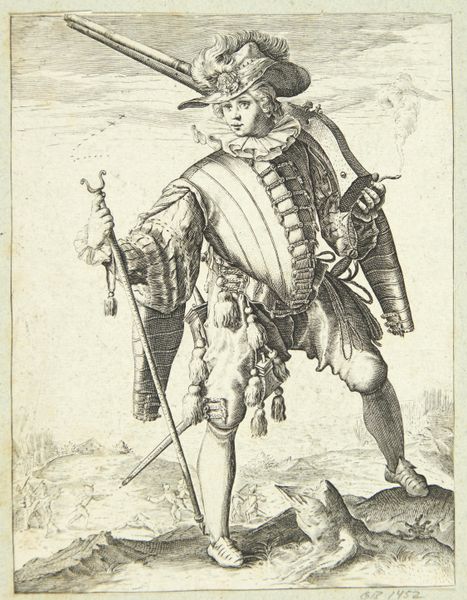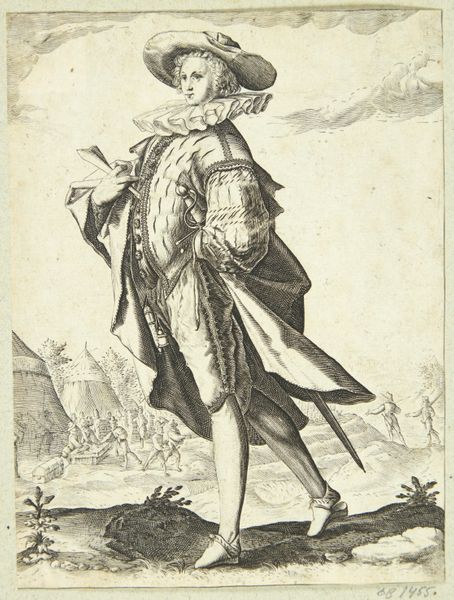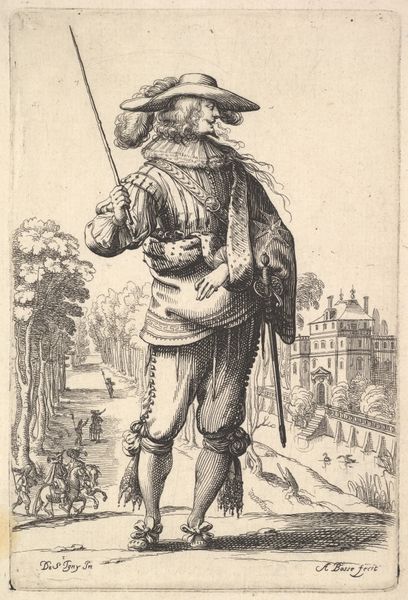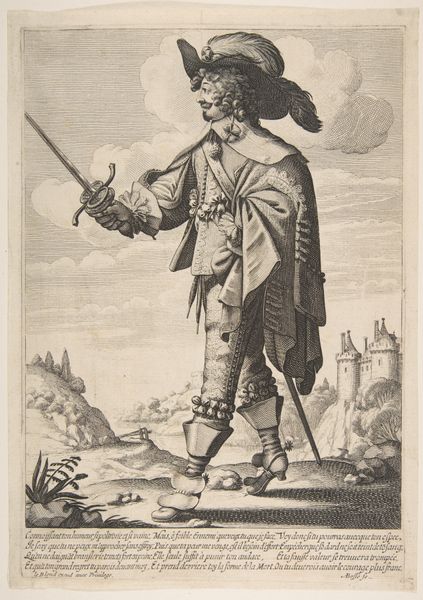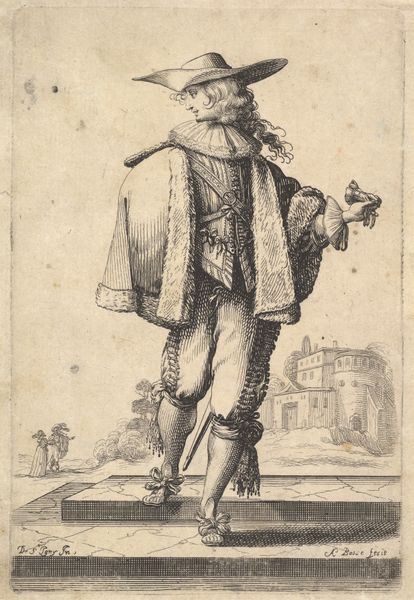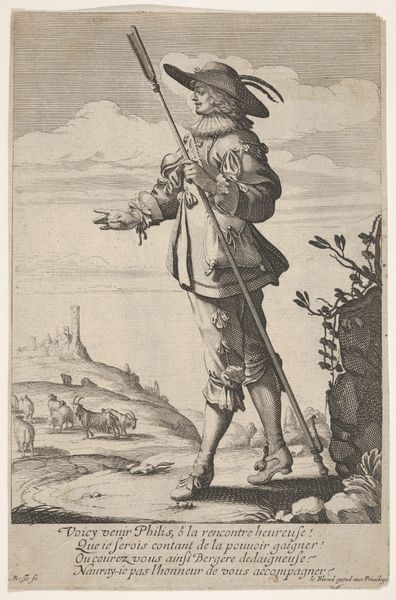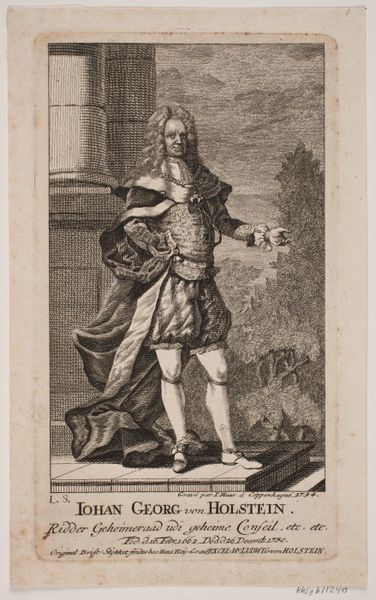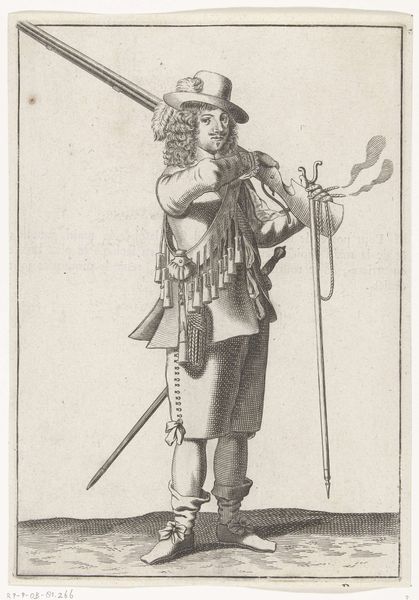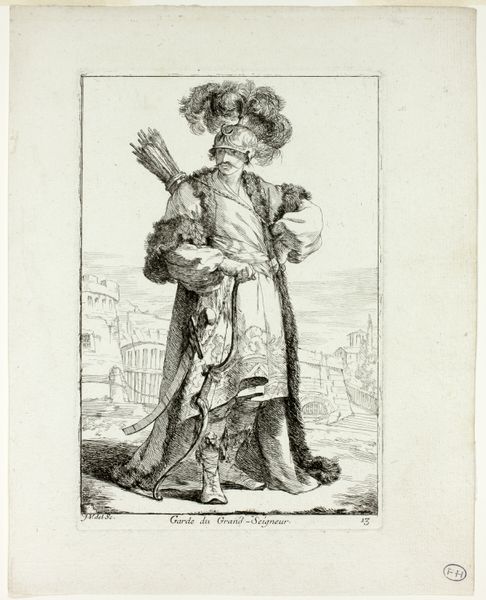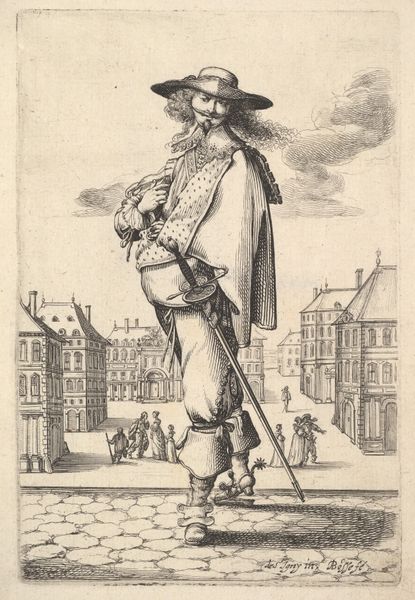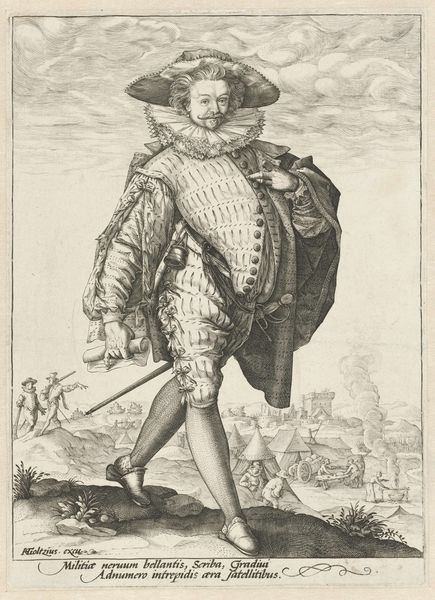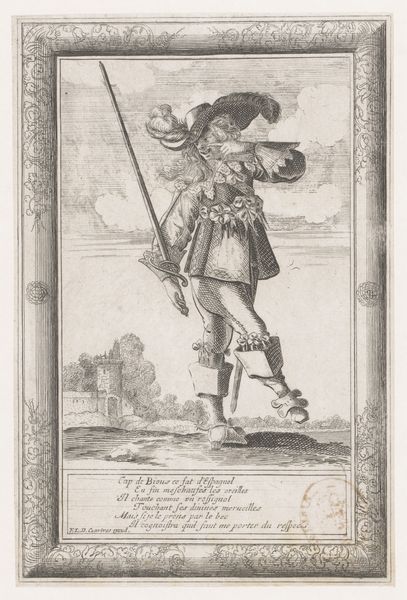
A gentleman walking forward, with his right arm outstretched and a whip in his left hand, wearing a plumed hat and decorated shoes, from "The Garden of the French Nobles In Which One Can Pick Up Their Way of Dressing" 1629
0:00
0:00
drawing, print, engraving
#
portrait
#
drawing
#
baroque
# print
#
figuration
#
men
#
genre-painting
#
engraving
Dimensions: Sheet: 7 3/8 × 5 1/16 in. (18.8 × 12.8 cm) Plate: 5 1/2 x 3 5/8 in. (14 x 9.2 cm)
Copyright: Public Domain
Editor: So, we're looking at "A gentleman walking forward..." made in 1629 by Abraham Bosse. It's an engraving, and the gentleman is certainly dressed to impress! What strikes me is his almost theatrical stance and the little whip he's holding. What do you see in this piece? Curator: I see a snapshot of 17th-century French social dynamics. This isn’t just a portrait; it’s a commentary on class, power, and performance. Consider the whip, for instance. Is it merely an accessory, or does it symbolize the gentleman's control, perhaps even the casual assertion of dominance over others? Editor: That’s interesting; I hadn't really considered it in terms of dominance. I guess I just saw it as part of the overall fashion statement. Curator: Exactly! Fashion itself was a political statement. The plumed hat, the decorated shoes, even the way he holds himself – all communicate his elevated social status. But who is he performing this status for? And what systems are in place that allow for this degree of display? It prompts us to consider who is excluded from this picture, who perhaps paid for this luxurious display? Editor: So it's like, the image is beautiful and extravagant, but it’s also subtly hinting at inequalities. Curator: Precisely. The beauty masks the socio-economic realities. By unpacking those visual cues – the whip, the clothing – we begin to understand the complex interplay of power and identity in the Baroque period. Consider the setting too: a garden, a space often associated with leisure and privilege. It further emphasizes the exclusive nature of this man's world. Editor: That totally reframes how I see it. I was initially caught up in the aesthetics, but now I see it as more of a social critique, or at least an insight into a specific social structure. Curator: Absolutely, and remember art is never created in a vacuum. By examining its historical and social context, we reveal a much richer and more nuanced understanding.
Comments
No comments
Be the first to comment and join the conversation on the ultimate creative platform.

